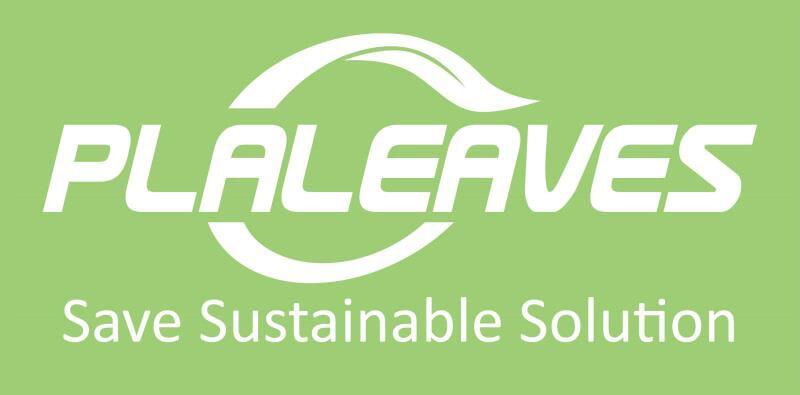Have you ever wondered where all the disposable masks you throw away every day go?
Under normal circumstances, discarded masks from residential life are sent to incineration along with "dry garbage" or "other garbage". In some cities, masks are burned to generate electricity, which can be considered a form of energy recovery.
Italian designer Tobia Zambotti's idea was even more creative: he turned discarded masks into "down jackets".
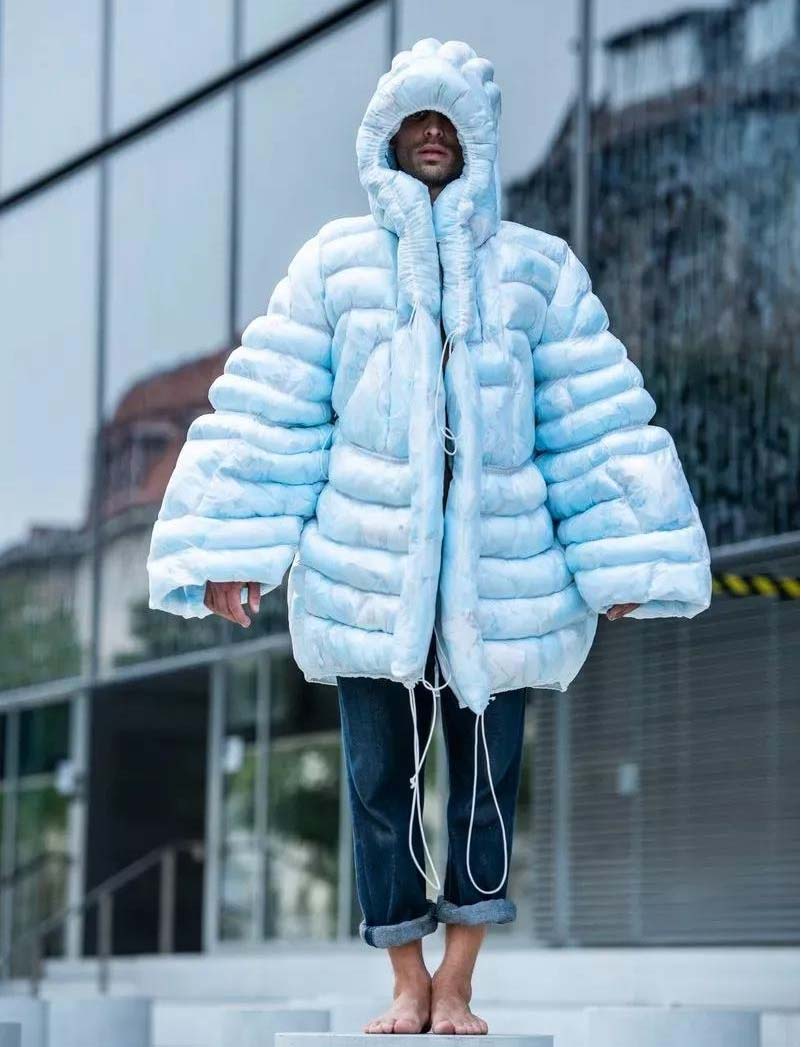
100 imaginations about discarded masks
You look at this ice blue down jacket from afar, you may only feel the color is quite fresh, fluffy look looks very warm.
Approach only to find that its filler is not duck down goose down, but a complete used discarded masks.
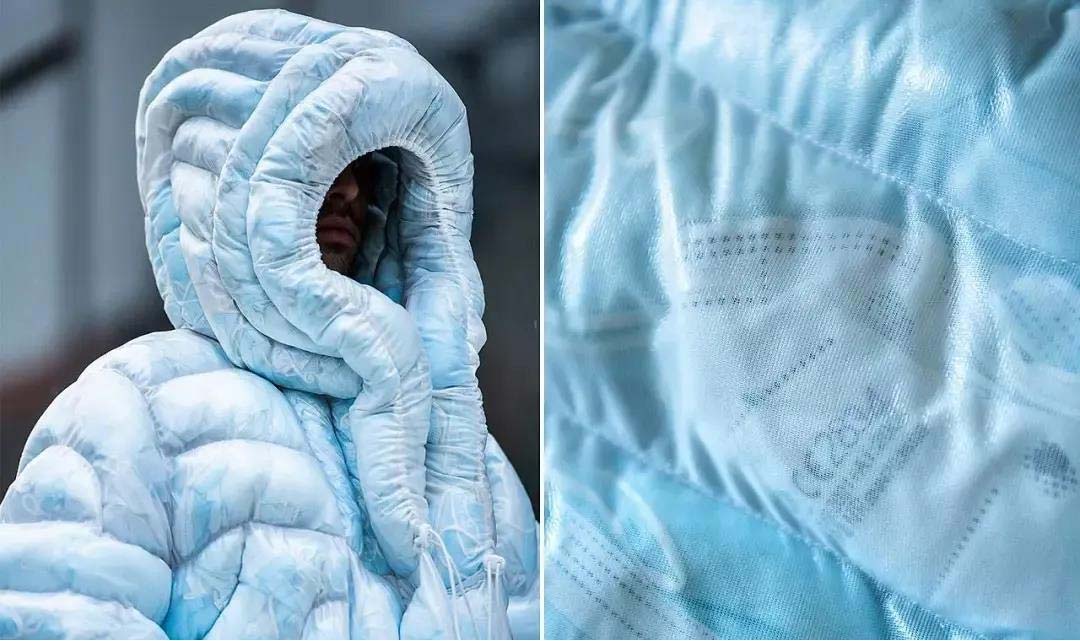
In August, Zambotti collected about 1,500 discarded masks from the streets of Iceland, stored them in sealed plastic bags for a month, and thoroughly disinfected them with ozone. He then gave the "raw materials" to Finnish fashion design student Aleksi Saastamoinen, who eventually created this unusual down jacket.
Zambotti and Saastamoinen call this down jacket "Coat-19". They made the outer layer of the down jacket out of a translucent, waterproof material, hoping that the visible masks would warn people of the "ridiculous environmental contamination caused by the epidemic".
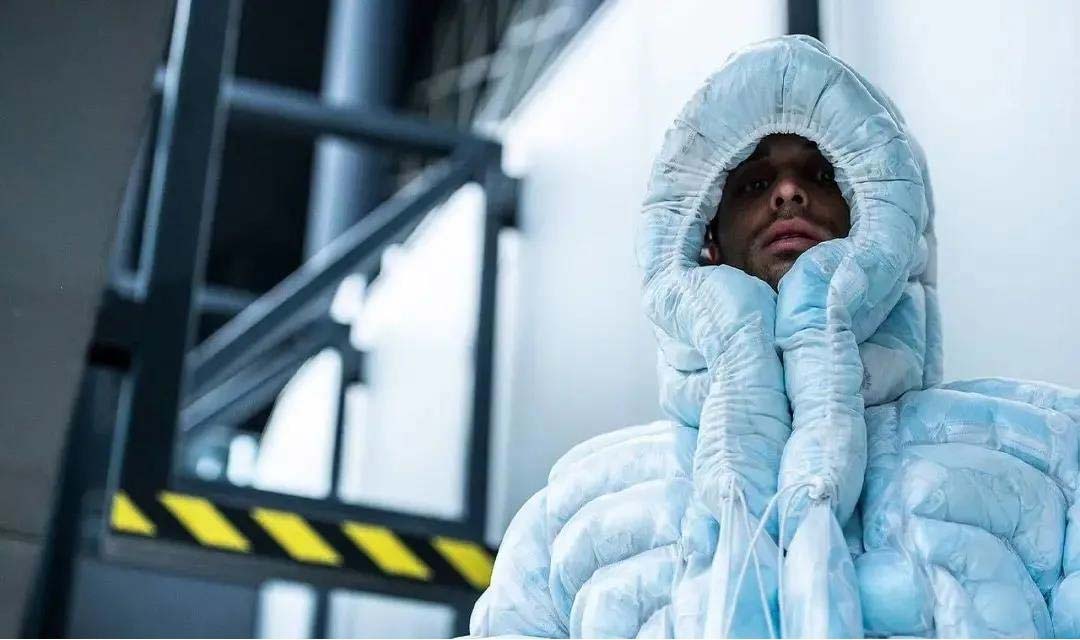
About 129 billion masks are used and discarded globally each month, most of them disposable, according to the journal Environmental Science & Technology. Oceans Asia, an international environmental organization, estimates that 1.56 billion masks will end up in the ocean in 2020, equivalent to 4,680 to 6,240 tons of plastic pollution.
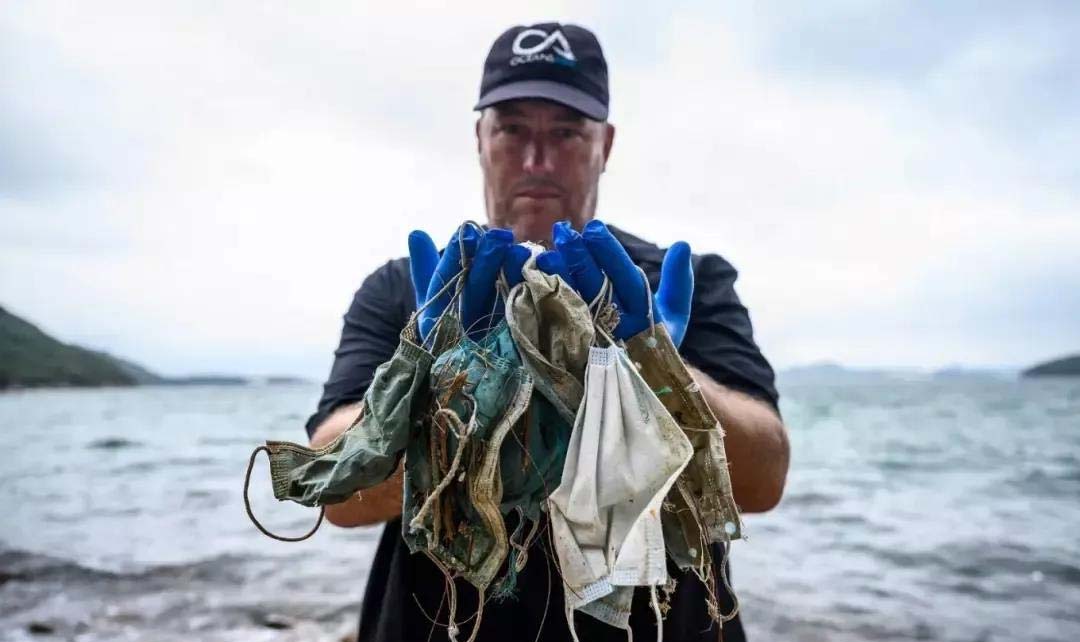
A casual walk on the beach, you can pick up dozens of masks
The main raw material of disposable masks is polypropylene (PP), which is also a plastic that takes up to 450 years to decompose, which is certainly worse for the marine ecology.
In the past two years, a large number of masks have invaded the marine ecology, penguins have mistaken them for food, seagulls have been entangled in their feet and cannot fly, sea turtles have been entangled in their mouths and noses, resulting in death... In our view on land, the mask is a protective tool, but for marine life has become a "deadly weapon".
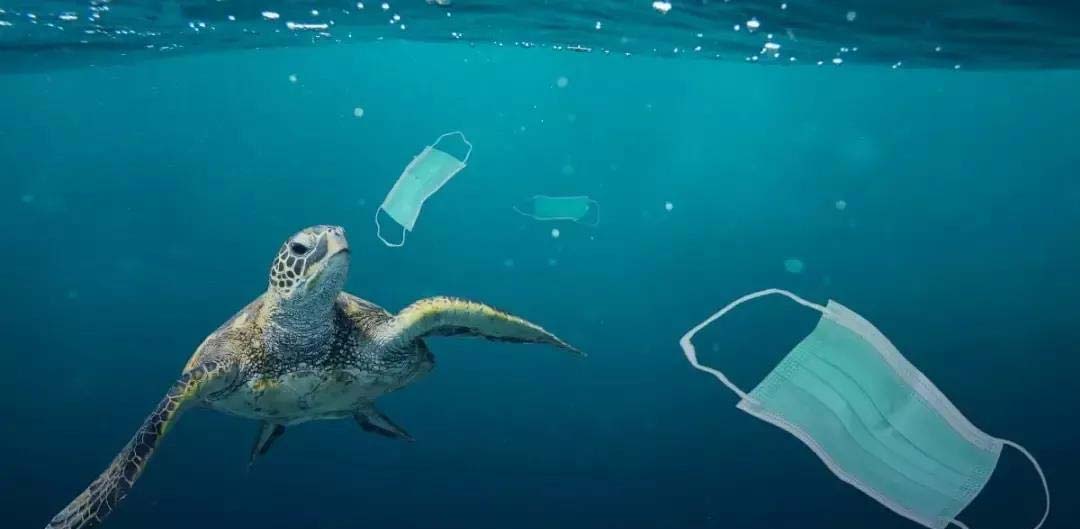
Zambotti discovered that polypropylene fibers could be used to make cheap down jacket fillings. The idea of recycling "mask duvets" came to him.
Before that, Zambotti had collected discarded street masks, sterilized them and left them intact to create the sofa cushion "Couch-19". He deliberately designed the sofa to look like an iceberg, hoping that people would realize that throwing away disposable masks and mishandling them is a big problem.
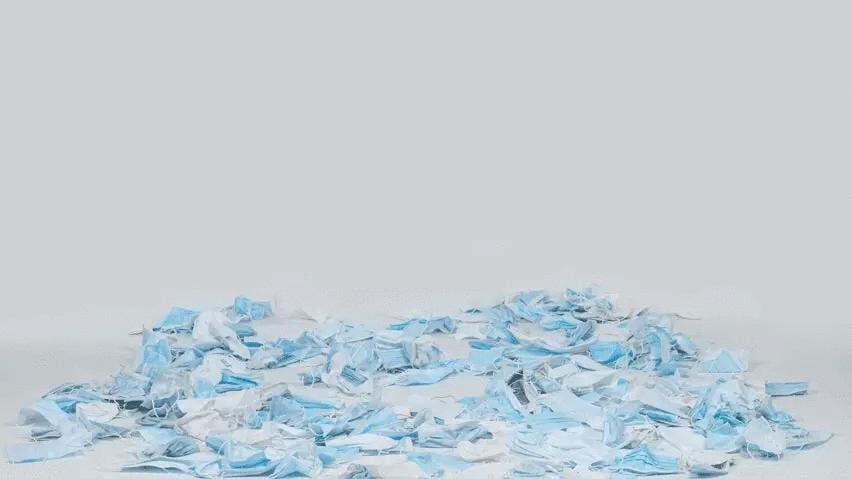
Haneul Kim, a Korean university student, noticed a similar problem.
Last June, he set up a mask recycling bin at his school, collected 10,000 discarded masks, and asked the factory for more than a ton of second-hand masks, which he sterilized, removed the elastic bands and metal strips, and then melted at over 300 degrees Celsius. Finally, he finished his final project: 9 "mask stools".
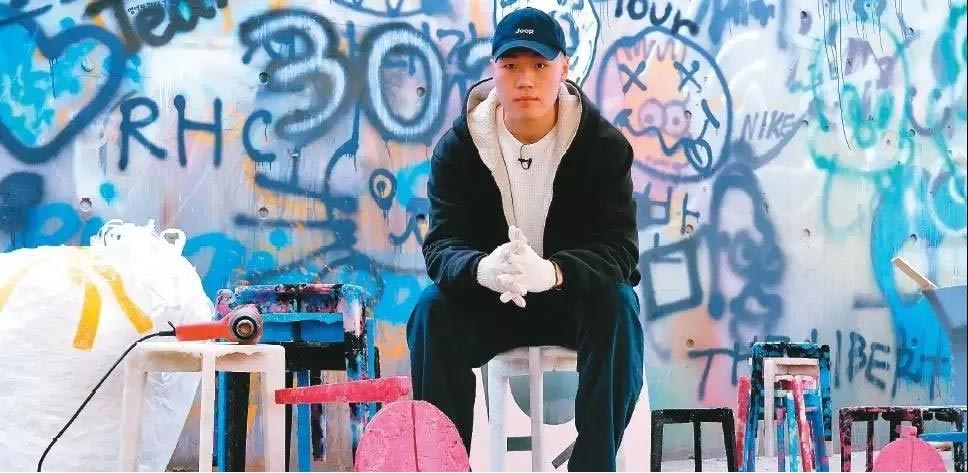
Kim says he hopes the colorful stools will help people think creatively about how to solve the pollution problem of discarded masks.
Since plastic is recyclable, why don't we recycle masks made of plastic?
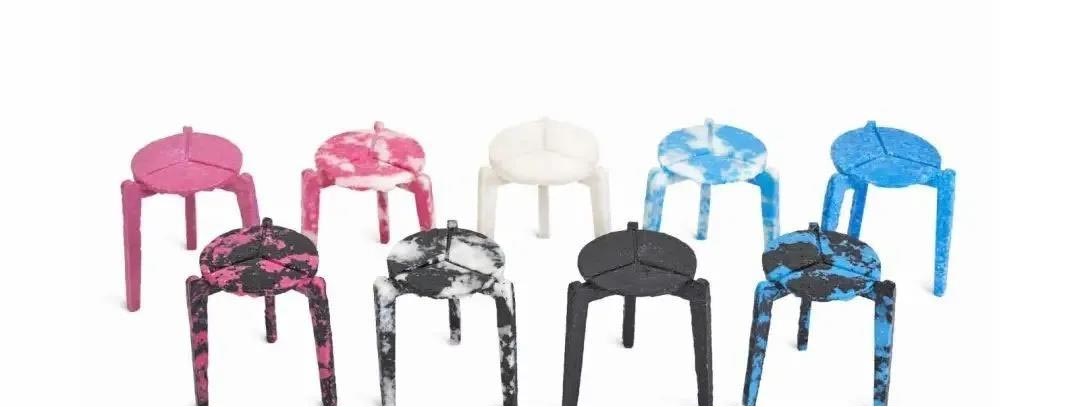
Stationery, tables, chairs, roads ...... The "second half of life" of discarded masks
Zambotti's "mask duvet" and Kim's "mask stool" sound more like independent art design projects.
But look around the world, in addition to environmental organizations regularly organized on the beach to pick up plastic trash and masks, there are actually some larger "waste mask recycling action" is underway.
The French startup Plaxtil is launching a solution for recycling masks starting in June 2020.
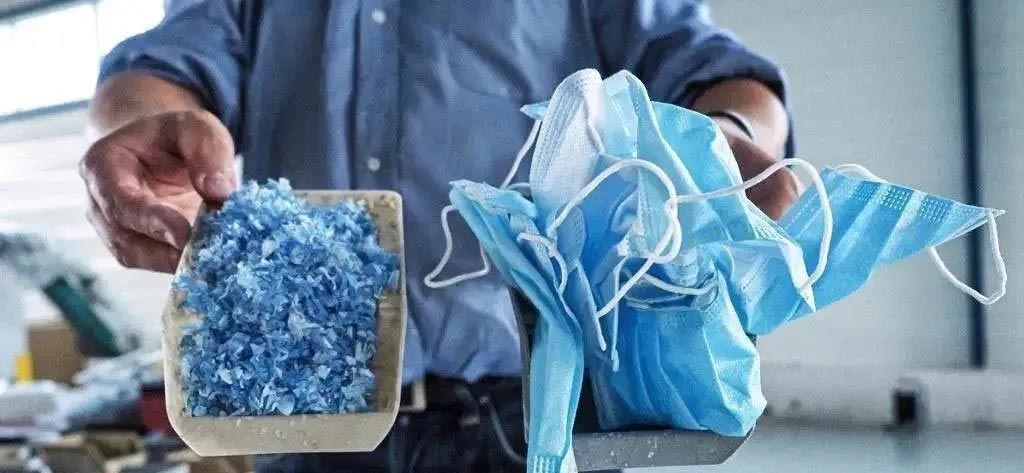
In the beginning, they worked with the local community to set up 50 mask recycling sites and collected more than 70,000 masks in three months. The collected masks are quarantined for at least four days, and the elastic bands and metal strips are removed, shredded, disinfected with UV light, and finally made into a plastic-like material that is used to produce stationery such as triangles, rulers, and protractors for local school students. For use by local school students.
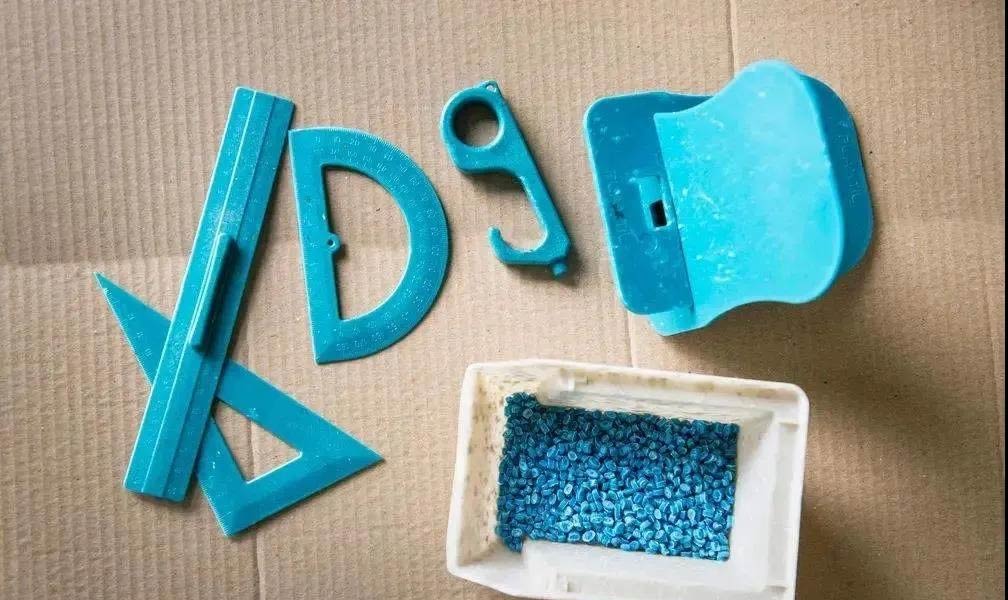
In May this year, the Paris city government launched a mask recycling initiative, setting up recycling points in several locations and signing a 100,000 euro cooperation agreement with Plaxtil to give some of the masks to them for recycling and disposal. The cost of recycling one cubic meter of masks is said to be 311 euros.
In the United States, TerraCycle sells disposable mask recycling bins to small businesses or households, which are filled and sent back. The masks are then sent to a processing plant for processing. After being recycled into plastic pellets, they are sold to third-party manufacturers and transformed into benches, carpets or shipping pallets.
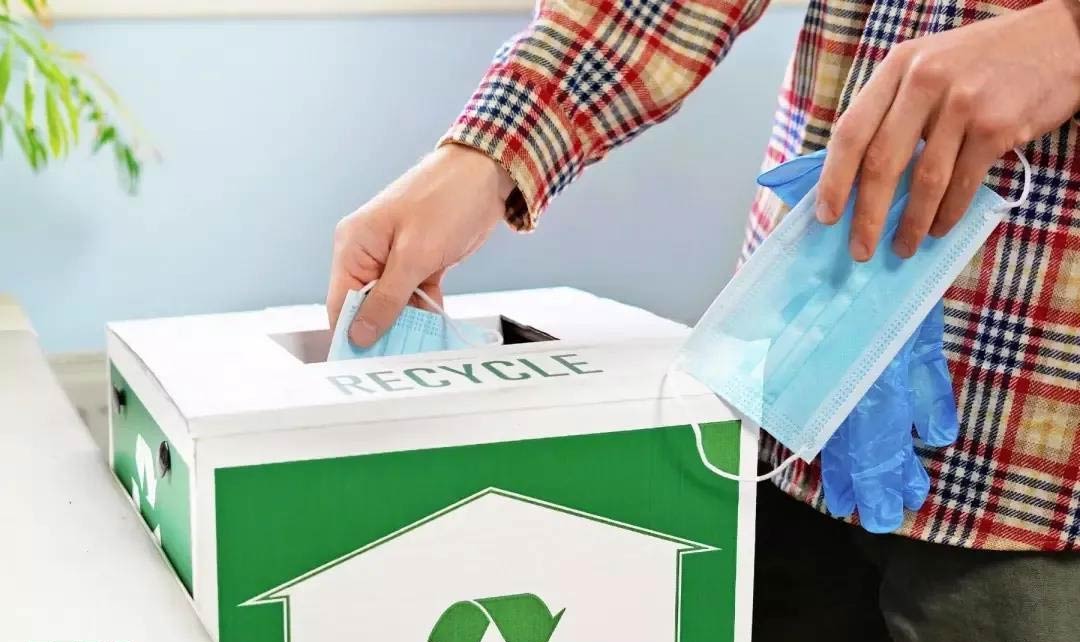
Many companies use a similar model of collection followed by recycling, but they usually emphasize that they do not accept discarded masks for medical use. However, a British company (Thermal Compaction Group) is taking a somewhat "different approach".
TCG works with 7 hospitals in the UK to provide hospitals with professional heating equipment that can heat protective clothing, curtains, and disposable masks used in hospitals into 1 meter long raw materials within 1 hour, which can then be recycled for making plastic chairs, buckets, and toolboxes.
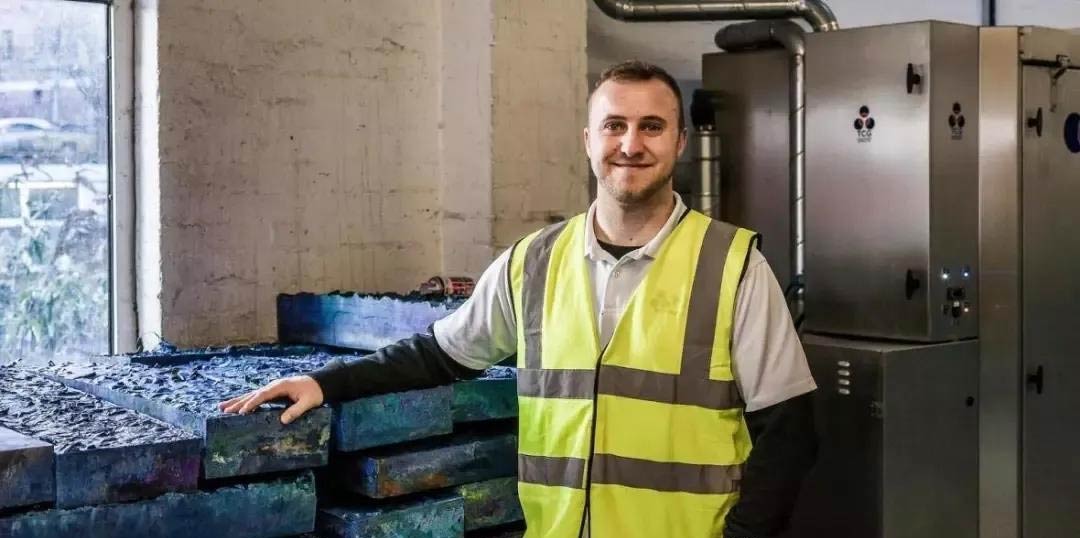
The "big slab" that looks uneven is the material made of recycled masks
And the Royal Melbourne Institute of Technology (RMIT) has another idea - mix 1% of masks with 99% of recycled construction materials to make paving materials.
The research team heated and sterilized the recycled masks and cut them into strips, then mixed them with recycled building rubble and concrete and found that the resulting material had good load-bearing capacity, heat resistance and moisture resistance.
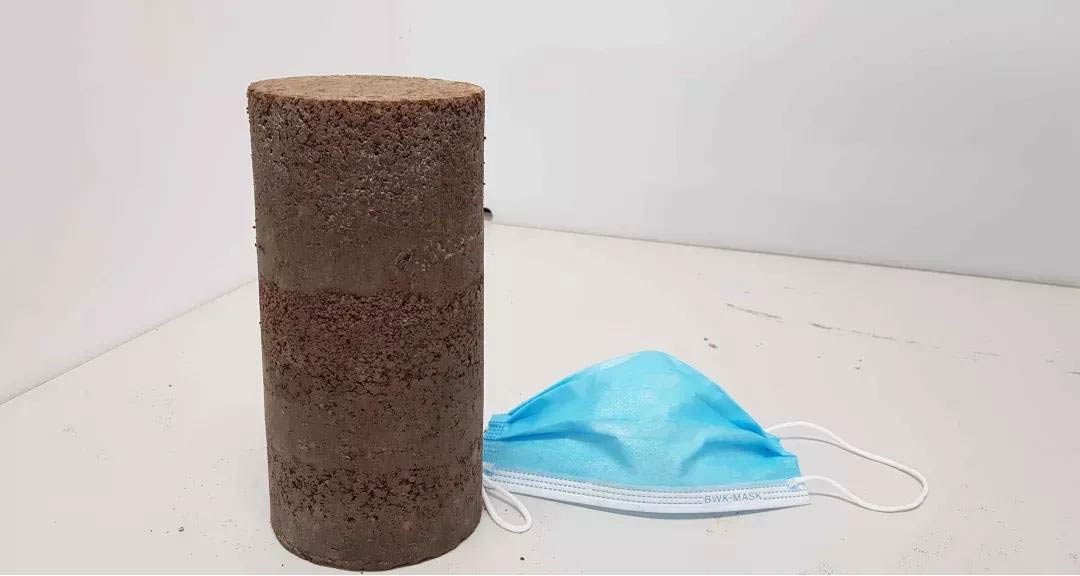
Sample of mixed paving material
About 3 million masks can be consumed to pave a 1 km two-lane road. The research team said that the road paved with this material will be stronger and more resilient, but the specific feasibility has yet to be tested and practiced.
Is it feasible to make masks more environmentally friendly?
Due to the high cost of recycling masks, for public health reasons, many people believe that centralized landfill or incineration is currently a more efficient way.
The Canadian nonprofit FCQGED calculates that it costs about $45,000 to recycle a ton of discarded masks, but the price of polypropylene itself is only about $1,500 per ton. Without significant government subsidies, a large-scale mask recycling program is not feasible.
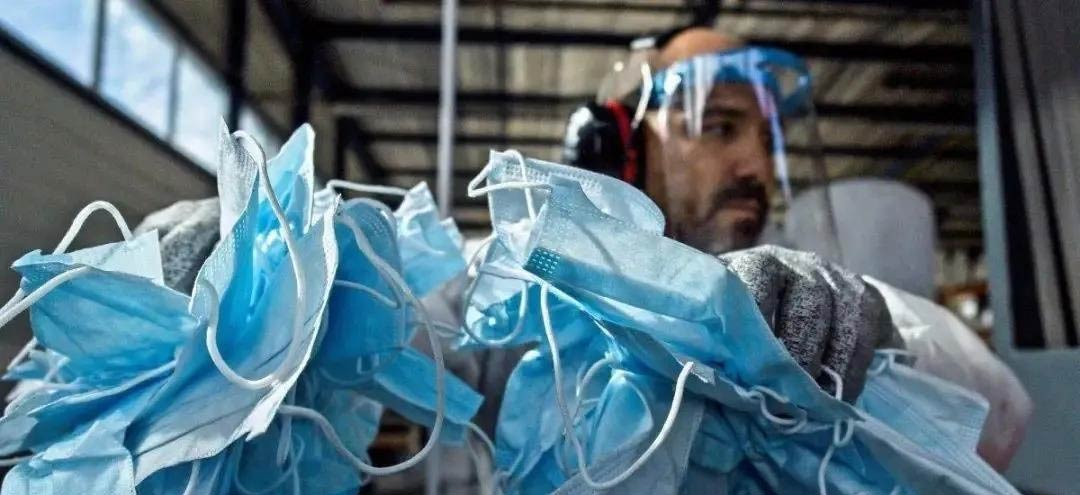
If the problem cannot be solved perfectly at a later stage, can it be avoided from the beginning?
After the concern of mask pollution, research on biodegradable masks has become a new trend. Materials such as polylactic acid (PLA), polyester fiber, hemp, thin paper, cotton paper, and wood fiber have become candidate materials for mask raw materials. In addition, some manufacturers are developing biodegradable polypropylene (PP) meltblown materials.
For example, polylactic acid (PLA), a material known as "green plastic", is made from corn, wheat, cassava and other plants. It is said that masks made of PLA do not release nitrogen, sulfide and other toxic gases when burned, and can be completely degraded to nature under composting conditions.
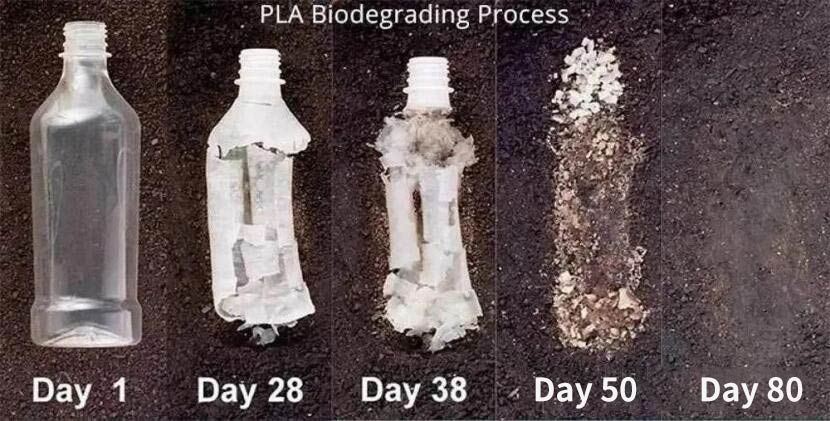
The natural degradation process of PLA materials
However, there are not many of these "eco-masks" in mass production, and consumers have their own concerns: If the mask is replaced with a different material, will its protection and filtration ability be affected? Will it still protect me well from the new coronavirus?
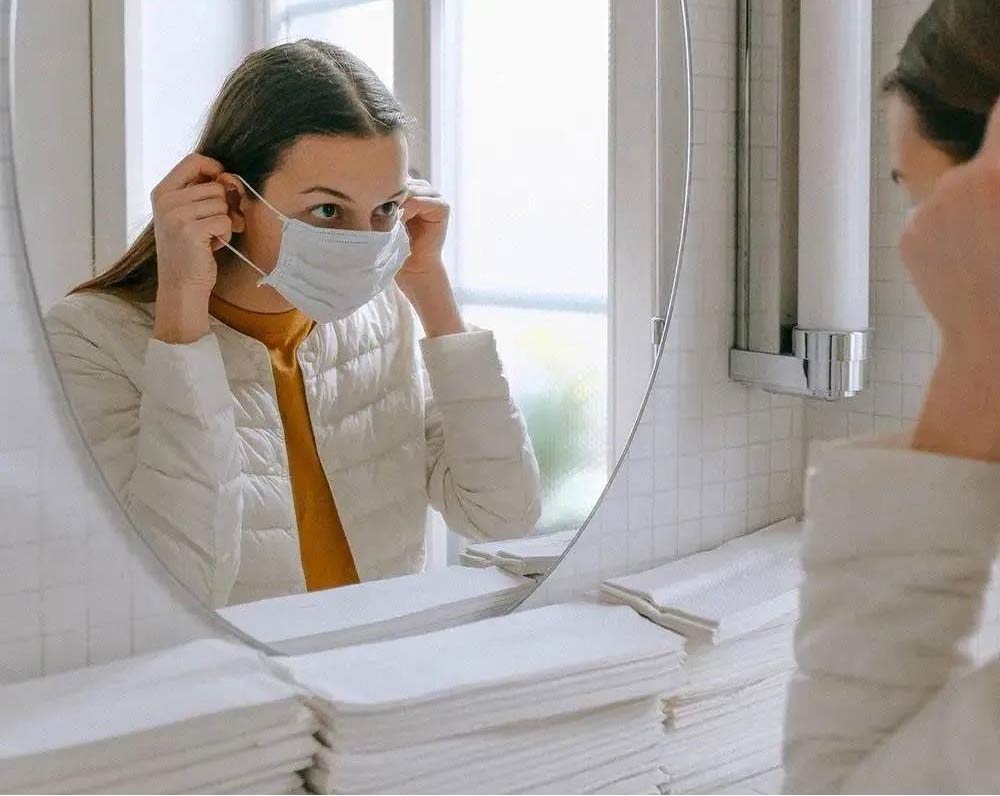
Back in the present, Erin Simon, WWF's head of plastic waste and operations, points out that the most difficult problem is that everyone is using masks, but not everyone is disposing of them properly. The most effective way to reduce pollution is to dispose of discarded masks in covered garbage cans, so that they don't have a chance to reach oceans, lakes and rivers.
In addition, some environmental agencies suggest that, for the sake of marine life, the rope can be cut off before discarding the masks.
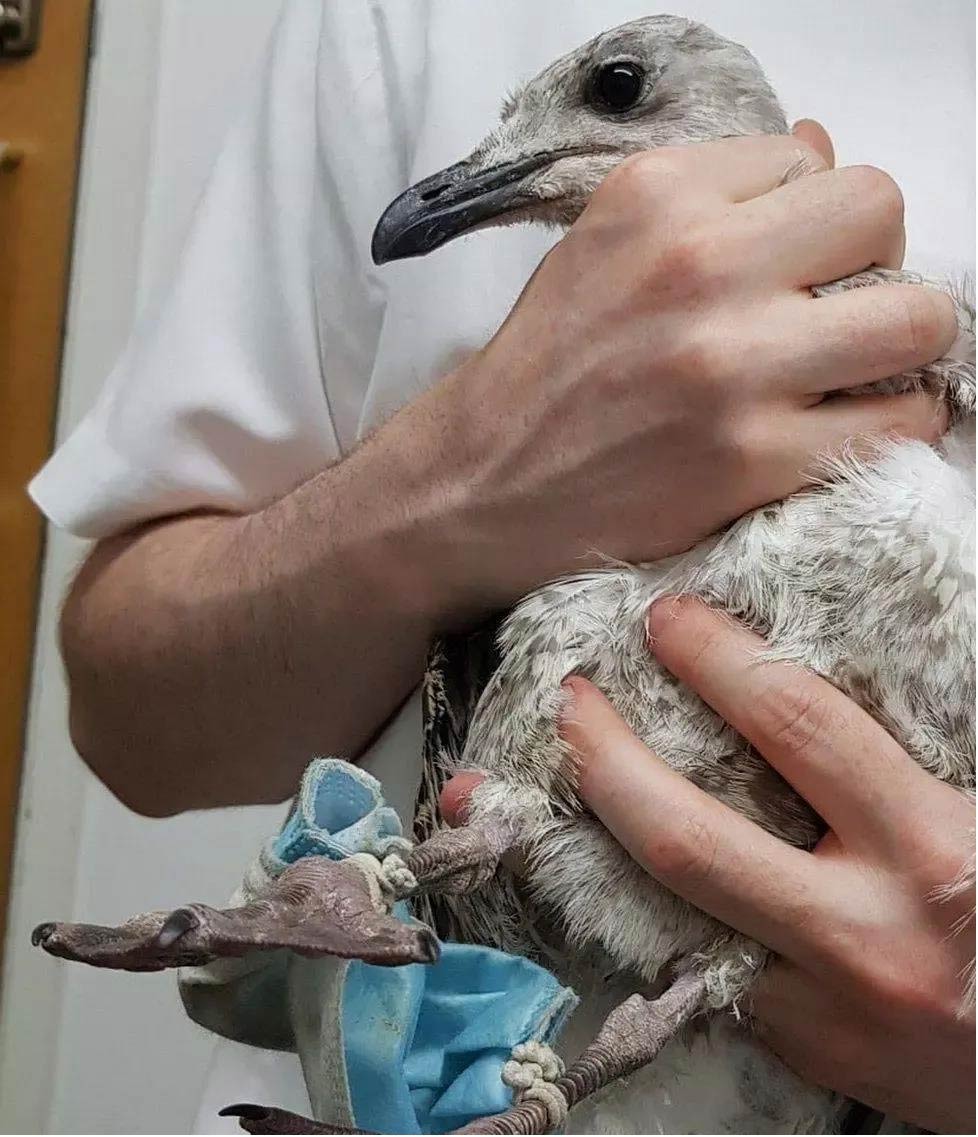
Seagulls with their legs tightly wrapped by masks
As the global epidemic front lengthens, we will be living with masks for a longer period of time.
Whether it's exploring recycling options or finding better alternative materials, it's time to address the pollution problem caused by the 129 billion masks thrown away each month.

